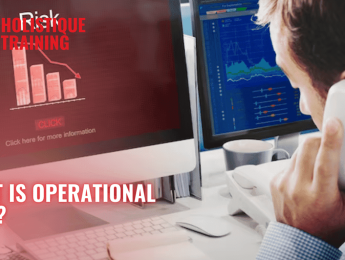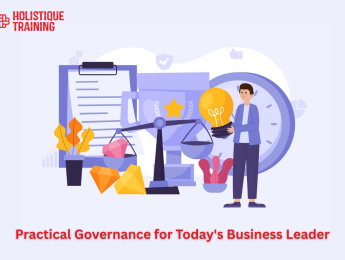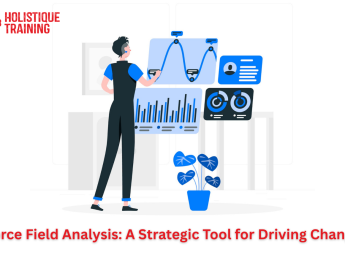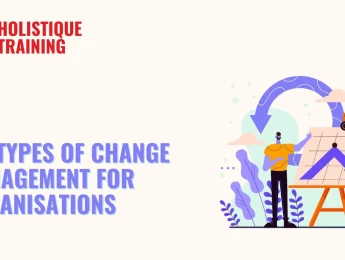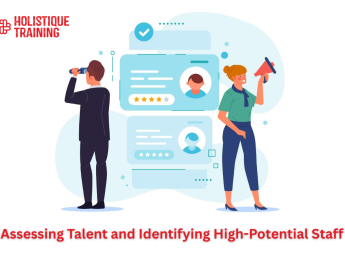- Table of Contents
- Introduction
- What Is Operational Risk?
- Causes of Operational Risk
- 1. Human Errors
- 2. Process Failures
- 3. Technological Glitches
- 4. Supply Chain Disruptions
- 5. Regulatory Non-Compliance
- Operational Risk vs. Other Types of Risk
- Operational Risk: A Comprehensive Perspective
- Market Risk: Riding the Financial Waves
- Credit Risk: The Borrower's Promise
- The Operational vs. The Financial
- The Overlapping Realities
- How to Assess Operational Risk
- Risk Indicators
- Loss Data Analysis
- Why Is Operational Risk Management Important?
- Preserving Reputation
- Ensuring Financial Stability
- Regulatory Compliance
- Safeguarding Operational Efficiency
- Enhancing Decision-Making
- Mitigating Human Errors
- Maintaining Customer Trust
- Enabling Innovation
- Supporting Long-Term Growth
- Strengthening Stakeholder Relationships
- The 5 Steps of the Operational Risk Management Process
- Step 1: Risk Identification
- Step 2: Risk Assessment
- Step 3: Risk Mitigation
- Step 4: Monitoring and Reporting
- Step 5: Feedback and Adaptation
- Conclusion
Introduction
In the fast-paced world of modern commerce, businesses are constantly confronted with a complex web of challenges and uncertainties. While opportunities abound, so do lurking threats. Among these threats, operational risk quietly looms, ready to disrupt even the most meticulously laid plans. In this comprehensive exploration, we embark on a journey into the depths of operational risk management—an essential strategic approach that not only unravels the intricacies of operational risks but also unveils the principles and steps behind effective strategies for mitigation.
What Is Operational Risk?
Operational risk refers to the potential for losses arising from inadequate or failed internal processes, systems, people, or external events. These risks can manifest in various ways, including fraud, human errors, technical failures, supply chain disruptions, regulatory non-compliance, and more. Unlike other types of risk, such as market or credit risk, which are often quantifiable, operational risks tend to be more challenging to predict and assess.
Causes of Operational Risk
Understanding the causes of operational risk is crucial for developing a comprehensive risk management strategy. Such risks can stem from a multitude of sources:
1. Human Errors
Employees are an integral part of any organisation, but they can also introduce risks through mistakes, negligence, or malicious intent. Human errors encompass a broad spectrum, ranging from data entry mistakes and miscommunications to more severe issues like insider trading or fraud. It's essential to recognise that even well-trained and dedicated employees can make errors, and addressing this aspect of operational risk requires a combination of training, oversight, and a culture of accountability within the organisation. Additionally, implementing technologies such as automation and artificial intelligence can help reduce the potential for human errors in certain processes.
2. Process Failures
Inadequate processes, poor communication, and lack of oversight can lead to bottlenecks and errors that cascade into more significant issues. These process failures can occur at various levels within an organisation, from workflow bottlenecks that slow down production to a lack of standardised procedures that result in inconsistent product quality. Identifying process failures often involves a comprehensive review of existing workflows, mapping out critical processes, and implementing measures likeSix Sigma orLean methodologies to streamline operations. Continuous monitoring and feedback loops are essential for maintaining process efficiency and identifying potential failure points.
3. Technological Glitches
In our digital age, technological failures can cause significant operational disruptions, ranging from network outages to data breaches. These glitches can result from software bugs, hardware malfunctions, or cybersecurity breaches. Technological glitches not only disrupt operations but also pose a significant threat to data security and customer trust. To mitigate this type of operational risk, organisations need to invest in robust IT infrastructure, regularly update and patch software systems, and implement comprehensive cybersecurity measures. Furthermore, having a well-defined incident response plan is crucial to minimise the impact of technological failures when they occur.
4. Supply Chain Disruptions
Organisations are interconnected, and disruptions in the supply chain can have far-reaching effects on operations and production. Supply chain disruptions can be caused by various factors, including natural disasters, geopolitical events, supplier bankruptcy, and transportation issues. To mitigate supply chain-related operational risk, businesses need to diversify their supplier base, implement inventory management strategies, and establish contingency plans. These plans should include alternative sourcing options and a framework for communication and coordination with key suppliers during times of disruption.
5. Regulatory Non-Compliance
Failure to adhere to regulations can result in legal penalties, reputational damage, and financial losses. Regulatory environments are becoming increasingly complex and stringent across industries, making compliance a top priority. Organisations must stay informed about relevant regulations, invest in compliance training for employees, and establish robust monitoring and reporting mechanisms to ensure adherence. Collaborating with legal experts and industry associations can also provide valuable insights and guidance on compliance matters.
Operational Risk vs. Other Types of Risk
While the world of risk might seem like a cohesive whole, it's composed of distinct categories, each with its own characteristics and implications. Operational risk stands apart from other types of risk, such as market risk and credit risk, due to its unique nature and far-reaching consequences.
Operational Risk: A Comprehensive Perspective
Operational risk is the realm of uncertainties that stem from the internal workings of an organisation. These uncertainties arise from various sources, including human errors, process failures, technological glitches, supply chain disruptions, and regulatory non-compliance. Unlike market risk, which revolves around fluctuations in financial instruments' value, or credit risk, which involves the possibility of borrowers defaulting on loans, operational risk delves into the operational intricacies that underpin a business's day-to-day functioning.
Market Risk: Riding the Financial Waves
Market risk is inherently linked to the fluctuations of financial markets. It encompasses the potential for losses due to changes in market prices, interest rates, and other financial indicators. Investors and financial institutions are particularly exposed to market risk as they hold investments susceptible to market movements. The goal of managing market risk is to anticipate and mitigate the adverse effects of market fluctuations, ensuring the preservation of capital and the achievement of financial objectives.
Credit Risk: The Borrower's Promise
Credit risk centres on the possibility that borrowers might default on their financial obligations, leading to financial losses for lenders. This type of risk is particularly significant in lending institutions and financial transactions involving credit extensions. Credit risk management involves assessing the creditworthiness of borrowers, setting appropriate lending terms, and establishing contingency plans to address potential defaults.
The Operational vs. The Financial
What sets operational risk apart is its breadth. Unlike market and credit risks, which primarily focus on financial aspects, operational risk delves into the entire ecosystem of an organisation. It encapsulates internal processes, employee behaviours, technology systems, and external factors like supply chains and regulations. While financial and market risks can be quantified to some extent, operational risk often defies simple quantification due to its diverse sources and complex interplay of factors.
Table 1: Key differences between operational risk and other types of risk
The Overlapping Realities
It's essential to recognise that these risk categories are not mutually exclusive. Operational risks can lead to financial losses, blurring the lines between operational and financial risk. For instance, a technical glitch in a trading platform can result in significant financial losses due to erroneous trades. Similarly, a supply chain disruption can impact both operational efficiency and financial performance. This interconnectedness highlights the necessity of comprehensive risk management strategies that encompass all aspects of an organisation's operations.
How to Assess Operational Risk
Assessing operational risk requires a combination of quantitative and qualitative methods. The challenge lies in measuring the unquantifiable, such as human errors and internal system failures. Several approaches can aid in operational risk assessment:
Risk Indicators
Trackingkey risk indicators (KRIs) can help monitor trends and deviations that might indicate a potential operational risk event. Below is a table illustrating examples of common KRIs and their significance:
Key Risk Indicator | Significance |
Increase in Error Rates | Indicates a potential increase in human errors |
Decline in Employee Training | Suggests a need for improved employee training |
Network Downtime | Signals the possibility of technological disruptions |
Supplier Delivery Delays | Highlights supply chain vulnerabilities |
Non-Compliance Instances | Raises concerns about adherence to regulations |
Creating hypothetical scenarios allows businesses to analyse the potential impact of various operational risk events on their operations and financial stability. This method involves brainstorming and evaluating the consequences of different adverse events, helping organisations prepare for a range of contingencies.
Loss Data Analysis
Reviewing past incidents and their associated costs can provide insights into recurring patterns and areas of vulnerability. By studying historical data, organisations can identify trends and take proactive measures to prevent similar occurrences in the future.
Why Is Operational Risk Management Important?
Operational risk management might not always be as visibly urgent as managing financial or market risks, but its significance cannot be understated. Here are several crucial reasons why operational risk management deserves your organisation's dedicated attention:
Preserving Reputation
In an era of social media and instant communication, a single operational failure can rapidly spread, damaging your company's reputation. Operational mishaps can erode the trust customers, investors, and partners have in your organisation, potentially leading to customer attrition and loss of business opportunities. Maintaining a strong reputation is not only about avoiding negative publicity but also about building a positive image of reliability, responsibility, and resilience. Reputation management should be an integral part of your operational risk management strategy, encompassing crisis communication plans and a commitment to transparency when addressing operational issues.
Ensuring Financial Stability
Operational risks can lead to direct financial losses, impacting the bottom line. Whether it's a supply chain disruption, a data breach, or a regulatory penalty, the financial consequences can be severe. Effective operational risk management helps mitigate these financial impacts and ensures the stability of your company's financial health. Financial stability goes beyond profitability; it involves maintaining adequate liquidity, managing debt responsibly, and safeguarding the long-term financial well-being of the organisation. This stability provides a solid foundation for growth and resilience during economic downturns.
Regulatory Compliance
Regulatory agencies are becoming more stringent in enforcing rules and regulations. Failure to adhere to these standards can result in substantial fines and legal actions, which can be detrimental to your business's operations and reputation. Regulatory compliance is not merely a legal requirement; it's a fundamental aspect of responsible business operations. Operational risk management should encompass a proactive approach to compliance, involving regular audits, comprehensive documentation of processes, and a commitment to staying ahead of evolving regulatory landscapes. By aligning your operations with regulatory requirements, you not only avoid penalties but also gain the trust of regulators and stakeholders.
Safeguarding Operational Efficiency
Operational risks can disrupt the smooth functioning of your business. A minor error or oversight can escalate into a major problem, leading to process bottlenecks and reduced efficiency. Maintaining operational efficiency is not just about optimising costs; it's about ensuring that your organisation can deliver products or services consistently and on time. By proactively identifying and addressing potential risks, you ensure that your operations run seamlessly. This involves continuous process improvement, the adoption of best practices, and a culture of accountability and problem-solving at all levels of the organisation.
Enhancing Decision-Making
Operational risk management provides insights into vulnerabilities and potential areas of concern. This information empowers decision-makers to allocate resources more effectively and make informed choices about investments, improvements, and future initiatives. Informed decision-making relies on accurate and timely information about operational risks and their potential impact. It also involves scenario planning and stress testing to assess how different risk scenarios might affect the organisation. By integrating risk data into strategic decision-making processes, you can make choices that are aligned with your risk tolerance and long-term objectives.
Mitigating Human Errors
Human errors are a significant source of operational risk. By implementing training programmes, clear processes, and robust internal controls, operational risk management helps mitigate the impact of these errors, reducing the likelihood of costly mistakes. Training programmes should not only focus on technical skills but also on fostering a culture of risk awareness and responsibility among employees. Additionally, organisations can leverage technology, such as workflow automation and artificial intelligence, to assist employees in error-prone tasks and provide real-time error detection and prevention.
Maintaining Customer Trust
Customer loyalty is closely tied to your ability to deliver consistent and reliable products or services. Operational disruptions can erode customer trust, leading to a loss of customer loyalty and, subsequently, revenue. Effective risk management preserves this trust by ensuring that customers can rely on your business's offerings. Building and maintaining customer trust involves not only delivering quality products or services but also demonstrating a commitment to addressing issues transparently and swiftly. Customer feedback mechanisms and a robust customer service strategy should be integral components of your operational risk management efforts.
Enabling Innovation
When your organisation's operations are stable and secure, there's room for creativity and innovation. With operational risk under control, your teams can focus on developing new products, services, and strategies to stay ahead in a competitive market. Innovation is not only about creating new products but also about optimising processes, exploring new markets, and adapting to changing customer preferences. Operational risk management provides the stability and confidence needed to explore innovative opportunities without compromising the core functions of the organisation.
Supporting Long-Term Growth
Businesses that prioritise operational risk management are better positioned for sustainable growth. By proactively addressing risks, you reduce the chances of catastrophic events that could hinder expansion plans or lead to business failures. Sustainable growth involves not only expanding into new markets but also ensuring that your existing operations are resilient to external shocks and internal challenges. Operational risk management contributes to the long-term viability of the organisation by providing a solid foundation for growth strategies.
Strengthening Stakeholder Relationships
Investors, partners, and other stakeholders are more likely to engage with an organisation that demonstrates a robust approach to operational risk management. This commitment signals responsibility and dedication to the well-being of the business. Strengthening stakeholder relationships involves transparent communication about risk management efforts, engagement with stakeholders in risk assessment and mitigation activities, and a commitment to ethical business practices. By fostering strong stakeholder relationships, you not only gain support and trust but also create a network of allies who can provide valuable insights and resources in times of need.
In summary, operational risk management is not a passive endeavour but an active and strategic approach to safeguarding your organisation's reputation, financial stability, and long-term success. It involves a commitment to continuous improvement, a proactive stance on compliance, and a culture of risk-awareness throughout the organisation. Operational risk management is an investment in resilience and sustainability, providing the confidence to navigate challenges and seize opportunities in today's dynamic business environment.
The 5 Steps of the Operational Risk Management Process
Operational risk management is a structured approach that requires careful planning, assessment, and implementation. The process is designed to minimise vulnerabilities, enhance resilience, and maintain the stability of an organisation's operations. Let's dive deeper into the five essential steps of the operational risk management process:
Step 1: Risk Identification
The foundation of effective risk management is the identification of potential risks. This step involves a comprehensive review of the organisation's processes, systems, and external factors that could trigger operational disruptions. Tools such as risk assessments, internal audits, and benchmarking against industry best practices are employed to identify sources of operational risk.
During this phase, it's important to involve individuals from various departments and levels of the organisation. Their insights can shed light on areas of vulnerability that might not be immediately obvious. Additionally, historical data and incident reports can provide valuable insights into recurring patterns of operational failures.
Step 2: Risk Assessment
Once potential risks are identified, they must be assessed in terms of their potential impact and likelihood. Assigning numerical values or scores to risks helps prioritise them and allocate resources accordingly. Qualitative factors, such as the severity of potential consequences and the probability of occurrence, are taken into account during this assessment.
Risk assessment often involves engaging experts and stakeholders to ensure a comprehensive and accurate evaluation. The goal is to categorise risks based on their criticality and potential impact on the organisation's objectives. This prioritisation guides decision-making when it comes to risk mitigation strategies.
Step 3: Risk Mitigation
With a clear understanding of the identified risks and their respective priorities, the organisation can develop and implement strategies to mitigate these risks. Mitigation strategies can encompass a wide range of actions:
- Process Improvements: Strengthening internal processes and workflows can reduce the likelihood of errors and operational failures.
- Employee Training: Educating and training employees about potential risks and best practices can enhance their ability to identify and prevent issues.
- Technology Upgrades: Upgrading technology infrastructure and implementing robust cybersecurity measures can mitigate the risks associated with technological failures and data breaches.
- Redundancy Planning: Creating backup systems, alternative suppliers, and redundancy plans can help maintain operations even in the face of unexpected disruptions.
- Contingency Plans: Developing comprehensive contingency plans ensures that the organisation is prepared to respond effectively to various operational risk scenarios.
Step 4: Monitoring and Reporting
Operational risk management is not a one-time endeavour; it's an ongoing process that requires continuous monitoring and assessment. Regular monitoring ensures that risk mitigation strategies are effective and that emerging risks are identified promptly. This step involves tracking key risk indicators (KRIs) and conducting periodic reviews of the implemented risk management measures.
Effective reporting mechanisms keep stakeholders informed about the organisation's risk management progress. Transparency in reporting fosters accountability and allows decision-makers to make informed choices based on the current risk landscape.
Step 5: Feedback and Adaptation
The operational risk management process is circular rather than linear. Feedback gathered from monitoring and reporting is essential for adapting and refining the risk management strategies. As the business environment evolves, new risks may emerge, while existing risks may change in nature. Therefore, organisations must be flexible in adjusting their strategies to address evolving challenges.
Adaptation may involve revisiting risk assessments, updating mitigation plans, and implementing new technologies or practices to respond to changing risk profiles. Regular communication among stakeholders and departments ensures that risk management remains a collaborative effort aligned with the organisation's overall goals.
Conclusion
Operational risk, market risk, and credit risk represent distinct facets of the intricate risk landscape that businesses must navigate. While operational risk arises from internal complexities and potential failures, market risk revolves around financial market fluctuations, and credit risk hinges on borrower behaviour. The key takeaway is that effective risk management demands a holistic approach that acknowledges the interplay between these different risk types. By doing so, businesses can create resilient strategies that not only weather market storms but also ensure the steady and secure functioning of their operations. To delve deeper into mastering the art of risk management, consider enrolling in our comprehensive course, ‘Business Risk Management Essentials & Strategies,’ where you'll gain practical insights and tools to safeguard your business's future with confidence.


